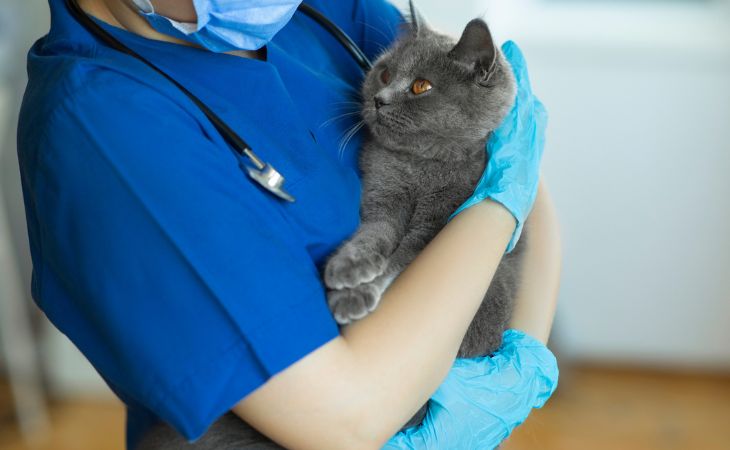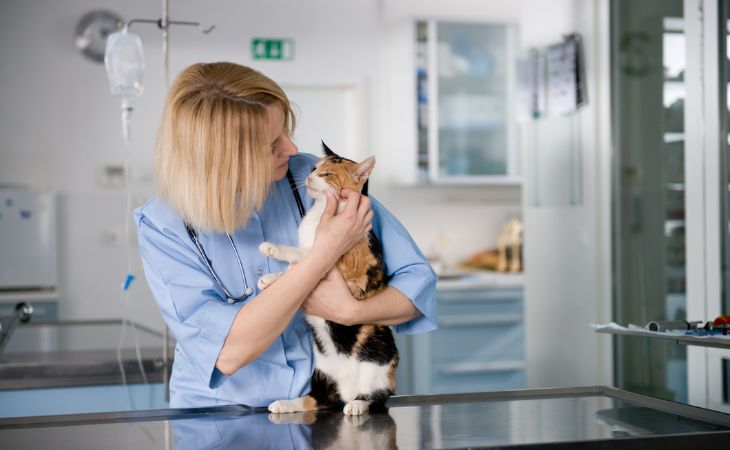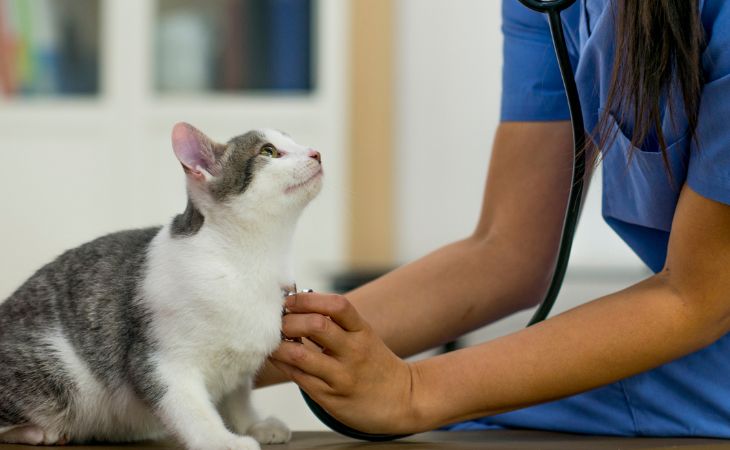While vet visits can be stressful for cats, it’s necessary for cats to go to them. In order to help your cat feel more calm, it is important to be patient with them when they are worried. Understanding your cat’s fear is the key to a safe and stress-free trip to the vet.
Vet visits: why are cats afraid?
Every new situation that our cats go through helps us to better understand how to deal with their stress. Cats absolutely dread vet visits. In this section, we will list a few reasons behind their fear of the vet.
Cat carrier
Before a vet visit, cats notice the cat carrier before anything else. The cat carrier reminds cats of the uncomfortableness that they felt when they last went for a vet visit. It is completely normal for a cat to be reluctant to the idea of going into their cat carrier again. This is especially the case if odors from their past vet visit are still present in the cat carrier.
Transportation
When you are getting ready to go to the vet, getting your cat into the car is not a simple task. Cats find ways of getting out of their carrier by pushing on the door or meowing as if they were in distress. It’s best to take the time to air out your car, especially when it is hot outside, or heat it up enough so that your cat does not feel too cold inside the car. A happy medium is necessary for your cat to not associate transportation with fear.
Once your cat is in the car, their visibility outside of the cat carrier should be limited. By providing your cat with the least amount of information to take in as possible, it allows your cat to have less sources of stress. You can give your cat a direct view of you or a person that is close to them. Hearing the sound of a familiar voice will reassure them as well. In addition, cats are sensitive to car rides. While turns can seem like nothing to us, they can be greatly destabilizing for cats.

Odors
Once you arrive at the vet clinic, your cat will analyze a mix of different odors. Similar to polecats and ferrets who emit a very strong from their anal glands when stressed, cats and dogs have a similar reflex.
Have you ever noticed an unpleasant odor coming from your cat’s carrier or from their body? You might have wondered if they had done their business during the trip to the vet? Cats can give off this odor when under a lot of stress. It allows cats to communicate their anxiousness to their owners. The area is in a way “marked” and the odor persists several minutes before disappearing.
The environment of the vet clinic
In addition to being overwhelmed by smells of the vet clinic, cats can be stressed by the vet clinic itself. If their previous visits were stressful because of vaccines or being held uncomfortably, your cat might be reluctant to go to another visit. Even if this vet visit does not require any unpleasant treatment for your cat, they will recognize the vet clinic as a hostile environment because of their bad memories.
How do I properly prepare my cat for a vet visit?
If you want to help your cat feel calmer during vet visits, we have a few solutions that will help.
Do not associate the cat carrier with the vet clinic
Preparing the cat carrier in advance can be really beneficial. Ideally, you can leave the cat carrier permanently in the house. This will help your cat feel more comfortable. You can make your cat carrier cozier by adding objects and familiar odors so that they feel safe.
Avoid stressing your cat out before leaving for the vet
It is normal to be anxious for your cat: vets visits can be stressful, but you can unconsciously transmit your stress to your cat. Therefore, you should try to be as calm and relaxed as possible in front of your cat. Also, think about petting them and giving them treats to bring them to their cat carrier. In addition, consider putting a piece of clothing in their cat carrier. This helps to reduce their anxiety.
Use catnip
Giving your cat toys with catnip or other calming plants will help them feel calmer. You can also spray some catnip into their cat carrier just before leaving. The effect of the plants only lasts a few minutes.

Ensure a gentle transport
If it is difficult for your cat to handle the car trip, it can be interesting to try new tips. You can cover the cat carrier with a light blanket that can allow them to isolate themself. This way, the outside environment will not bother them. As much as possible, do not hesitate to take breaks of a few minutes to reassure your cat, especially if the trip to the vet clinic is particularly long. Lastly, a smooth and relaxed drive is best to avoid any abrupt movements.
Use rewards
Define precise moments during which your cat can have treats. Without going overboard, this can be a way to keep them stay calm. You can determine how often and if this positively changes their behavior.
Manage the waiting time before the appointment
Sometimes, you can arrive at the vet clinic during a busy time. To keep your cat calm during a distressing time, isolate your cat by obstructing their view when in a busy waiting room filled with other animals. Your cat will be less stressed because they are less exposed to the outside.
I still cannot keep my cat calm: what should I do?
The fear of the vet in cats can be more or less intense. Every animal is different and can be more of less receptive to certain solutions. Sometimes, some cats also need time.
Handle your cat with care
Be patient with your cat before putting them in their cat carrier. You can try to roll them delicately in a blanket, like swaddling a newborn baby. By doing this, you can place your cat in the cat carrier without them getting hurt and it also protects you from getting scratched.
Speak with your vet
Several vet clinics have separate waiting rooms, separate from other cats and dogs. It is also possible to wait outside of the vet clinic. You can also have someone else that you know keep your cat in the car with them while you are waiting for your turn. In addition, vet clinics can propose various solutions. If you start to get your cat used to going to the vet when they are young, it will be easier for them to feel calmer at the vet. Do what you can so that your cat feels as calm as possible for futures visits.

